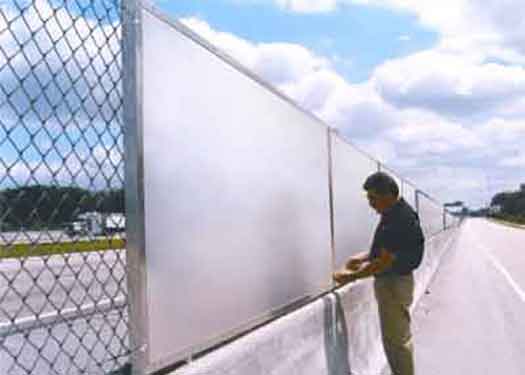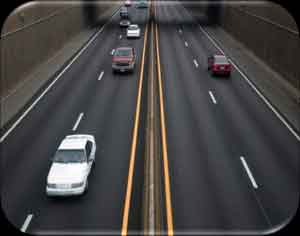Highway Noise Barriers
AWSP® Highway Noise Barrier Information
A primary consideration when determining the appropriate design for a noise barrier is the visual impact it will have on the area. Placing a tall barrier adjacent to communities with one-story homes can impede the view and the whole aesthetic dynamic. When it comes to addressing the noise barrier size issue in these communities, one answer is to provide staggered elements, such as native vegetation and other appropriate landscape, to the foreground to reduce the barrier’s visual impact.
Planning the placement of sound barriers is extremely important when it comes to retaining a visually pleasing value within the neighborhood. One rule of thumb that is often adhered to is to locate the noise barrier approximately four times its height from adjacent homes and buildings, and to install landscaping close to the barrier.
Ideally, highway sound barriers should harmonize with their surroundings as much as possible. Some sound abatement materials used in highway barriers are more adaptable than others; in addition to visual considerations, planners look for sound barrier materials that are low maintenance, easily installed and durable.
Sound barriers can have a psychological effect on motorists, a factor that is considered in the design process. The design of noise barriers in dense urban settings will be different than the barriers installed in rural and suburban areas. On urban highways, sound barriers need to be designed to avoid monotony for the motorists, who tend to notice things like surface texture, overall form and color. DOT planners have found that by varying the materials, forms and surface treatments of the barriers, they can combat the “tunnel effect” that motorists experience driving long stretches alongside an unchanging sound barrier wall.
Graffiti is always a potential problem with noise barriers. Using a sound barrier material that can be easily washed or painted is an excellent preventative measure that planners can take, particularly in areas where graffiti is probably going to be an issue.
Vegetation, if it is dense and tall, can provide a very small measure of noise dampening, but not nearly enough to achieve any serious noise reduction along a busy highway. The best idea is to use trees and vegetation to camouflage the barrier for a visually pleasing solution to highway noise.
Most people who live or work near a highway noise barrier are pleased with the reduced levels of traffic noise, and there is a general consensus that the benefits provided by highway noise barriers far outweigh their disadvantages. While noise barriers do not completely eliminate all highway traffic noise, they do reduce it substantially and improve the quality of life for those who live and work next to busy highways or train rails.

Highway Noise Barriers

